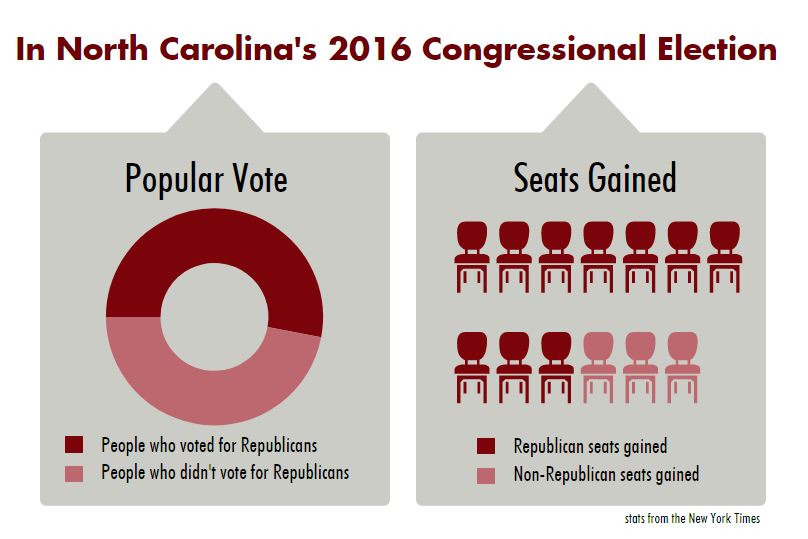Why gerrymandering is the biggest threat to democracy
Graphic by Meimei Greenstein.
March 7, 2018
There are plenty of threats to American democracy—our current president, Russian hackers and increasing political divisiveness all qualify. But the biggest threat comes down to the very process of how we set up our elections: gerrymandering. Through gerrymandering, state legislatures draw district lines for partisan advantage rather than equal political representation, constituting a dangerous attack on our democracy.
Gerrymandering allows the majority party to either dilute opposition across many districts or concentrate it in one district, reducing the opposing party’s political power. As a result, gerrymandering prioritizes partisan interests while subjecting minority political groups to unfair rule.
Gerrymandering needs to be addressed before the upcoming election. In 2000, Maryland had four Republican representatives; but since the 2010 census and redistricting, it has only had one largely due to gerrymandering, a Jan. 5 Baltimore Sun article reported. Gerrymandering isn’t just a problem in Maryland. Recently, the issue has become even more extreme in certain states, leading to larger discrepancies between the popular vote and subsequent representation in state and national legislatures.
In Pennsylvania, voters’ preferences didn’t reflect the results in the 2012 congressional election. Democrats won 51 percent of the votes but were only able to win five of the 18 districts, or 28 percent of the seats.
In response, the Pennsylvania Supreme Court ruled that the current district lines violated the state’s constitution, a decision that the U.S Supreme Court upheld Feb. 5. Decisions like this are small steps toward creating fairer congressional elections, but gerrymandering remains prevalent around the country.
In the 2016 election, North Carolina Republicans won 53 percent of the popular vote, but gained 10 of the 13 congressional districts, or 77 percent of seats. In this case, however, the U.S. Supreme Court temporarily blocked the trial court’s order to revise the congressional map.
When congressional elections aren’t competitive, elected representatives don’t face pressure from the people they represent and voters don’t believe they can make a difference in such an entrenched system. But without clear direction from the U.S. Supreme Court, heavily gerrymandered districts will likely remain in place for the 2018 midterm elections.
Gerrymandering continues to be a problem in our political system because both parties benefit from redrawing districts. Still, this issue needs to be addressed to ensure districts accurately represent the populace. Districts should be determined by independent commissions, not party officials. Nonpartisan redistricting would create more competitive districts and make incumbents more accountable to their constituents.
Instead of “a government of the people, by the people and for the people,” ours can easily transform into one divided by partisan mapmakers with the use of gerrymandering. As a nation, we must acknowledge this danger to our democracy and create solutions to end it for good.










